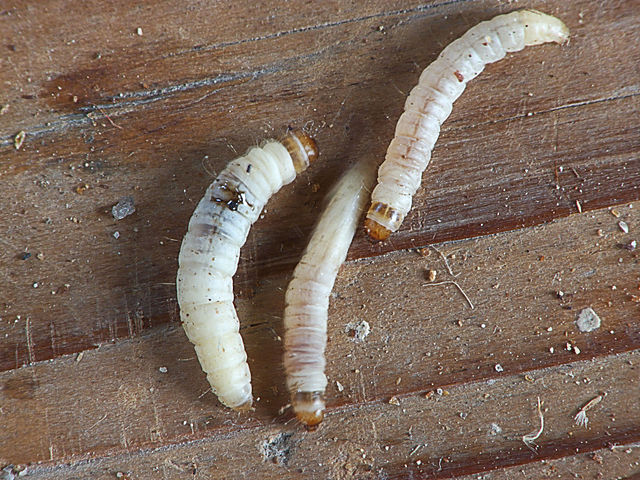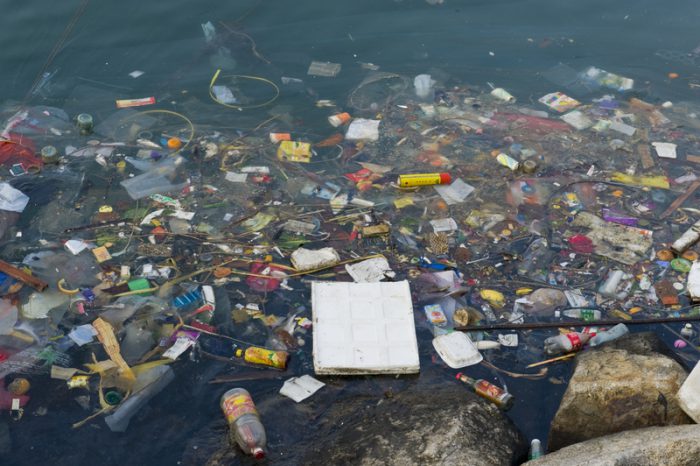Every year, humans produce about 300 million tons of plastic. How much is that? According to a study in 2012, all of the 7 billion human beings on Earth weigh around 316 million tons. In other words, it's a lot of plastic.
What's worse? Maybe 10% of that plastic is recycled. The rest of it just sits there and pollutes the planet. Plastic decomposes (or breaks down) incredibly slowly, and even when it does decompose, it leaves behind toxic chemicals.
If only there was an animal that could turn the plastic we produce into food. Well, guess what? There is!
Meet the wonderful wax worm!
Maybe not a worm, but still wonderful

Wax worms, just hanging out. (Wikimedia Commons)
The so-called wax worm is not actually a worm at all. It's the larvae, or caterpillar form, of the wax moth. It gets its name from its favourite food—the wax structure of beehives.
These caterpillars are parasites of the bee homes. (This means that they live off another organism, and benefit from it, without giving anything to that organism in return.) They eat cocoons, shed skin, and especially the wax.
Accidental discovery
If you're a beekeeper, you're going to try and get these pests out of the hive. That's exactly what Federica Bertocchini, a biologist at the University of Cantabria in Spain, was trying to do two years ago. As she cleaned out the hive, she casually placed the wax worms into a plastic bag and left it for a while. When she checked on the bag an hour later, she was stunned to find small holes in the bag.
Later tests revealed an amazing truth. These caterpillar weren't just chewing holes in the plastic. They were eating and digesting the substance.
Magic enzyme
Workers sort through plastic at a recycling plant. Recycling helps to cut down on some plastic waste, but human beings still need to find a better way to deal with the problem of pollution. Is the the wax worm part of a solution? (Getty Embed)
How was the wax worm's body able to do this? It produces a certain enzyme, which is a substance that creates chemical reactions. Normally, it uses the enzyme to break down the tough structure of beehives. The wax is an organic polymer. Another organic polymer? Plastic! The same incredible enzyme was letting these tiny worms break down a substance that would just sit undigested in the stomachs of most other animals on Earth. (Interestingly, the mealworm is able to do the same thing with Styrofoam.)
Is this the solution to the world's plastic problem? Considering that it would take 100 wax worms a whole month to eat one plastic bag? Probably not. But by separating the enzymes in the worms, scientists may be able to create a solution in the future that could biodegrade plastics.
Just goes to show that in the animal world, even the tiniest ones are full of surprises!
 Plastic pollution is a big problem around the world. (© Lovell35 | Dreamstime.com)
Plastic pollution is a big problem around the world. (© Lovell35 | Dreamstime.com)









